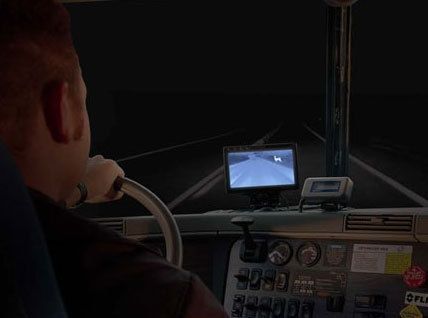Thermal Imaging: Redux By Necessity
Lately, there’s been quite a bit of constructive argument and confusion floating around the crime-writing community about thermal imaging and it’s use in law enforcement. Some have posted comments and questions regarding the legality of thermal imaging devices, such as FLIR (Forward Looking Infrared ). Others have asked how thermal imaging works. Well, there’s no better way to learn about something than to see it in action, so here we go.
First of all, what is thermal imaging, and what is it’s role in police work?
MacMillan Dictionary offers a decent, yet quite simple definition of thermal imaging – the system by which special equipment is able to record the heat that people or buildings produce, used especially by the police and the armed forces.
FLIR is a brand name (FLIR Systems) of thermal images devices. The name is sometimes used synonymously with all thermal devices, but that’s not correct. However, we’ll be discussing FLIR in this blog because it is a popular unit used by law enforcement and the military.
Night vision and thermal imaging are NOT the same. Night vision devices (the devices that illuminate the surroundings in that eerie green color) must have some degree of light in order to operate. The devices gather and then enhance and amplify the light source, which allows the user to see things more clearly. They will not function in total darkness.
Thermal imagers, such as FLIR, actually see heat (humans, animals, cars engines, ducting in homes, etc.) from miles away. FLIR does not need any light in order to “see” its target.
There are a variety of uses for FLIR, such as volcano monitoring, tracking people and animals, and even detecting energy loss in buildings (FLIR sees the escaping heat). FLIR units have been designed for use in automobiles for the purpose of detecting deer,and other wildlife that may cross the highway in the nighttime (above image).
Here’s a short video showing the basics of a thermal imager.
This video is an actual police video showing air support using FLIR to track an armed suspect. WARNING – This video ends in the suspect’s suicide. The images are all in black and white (FLIR), but it is what it is. Notice how FLIR displays the “after effects” long after the incident has terminated. Also, pay attention to the audio of the dispatcher relaying information from the helicopter crew to the officers on the ground. Dispatchers play a huge role in police work and officer safety.
*Video deleted*
Here is a video presented by a man who’s attempting to instruct indoor marijuana growers on how to effectively beat FLIR technology, which (he thinks) prevents the detection of the heat emitted from grow lamps. I hate to be the bearer of bad news for this gentleman, but law enforcement officers have numerous other methods of grow room detection available to them. FLIR is just one of many.
I included the video above as an introduction to the last question we’ll address – the legality of FLIR.
The police may NOT use FLIR and other thermal imagers for “fishing expeditions” into private dwellings (See, the man in the marijuana video is wasting his breath. If police are using FLIR on your home they’ve already established PC. They know what you’re doing, and they’re coming for you, dummy!).
After establishing probable cause officers may obtain a search warrant for the use of FLIR devices. A search warrant is not needed to use FLIR in public places.
I don’t normally rely on Wikipedia for this blog, but this is accurate:
Kyllo v. United States, 533 U.S. 27 (2001), held that the use of a thermal imaging device from a public vantage point to monitor the radiation of heat from a person’s home was a “search” within the meaning of the Fourth Amendment, and thus required a warrant. Because the police in this case did not have a warrant, the Court reversed Kyllo’s conviction for growing marijuana.





Huh ! ? ? What kind of knucklehead puts his face and peeps on camera for 9 minutes to discuss growing pot on you tube ?
Very interesting indeed. Do you know how far way the deer was from that first picture. When I was a writer at Ford, some customers lived in wooded areas. They had some devices available then for deer. Not sure I saw a FLIR.
Hate to admit, however I think I thought night goggles worked in pitch dark after watching Silence of the Lambs. I think they used them in pitch dark if I remember right. Now I know !
This was a really interesting post, Lee. The videos were intriguing, and provide plenty of inspiration. Thanks!